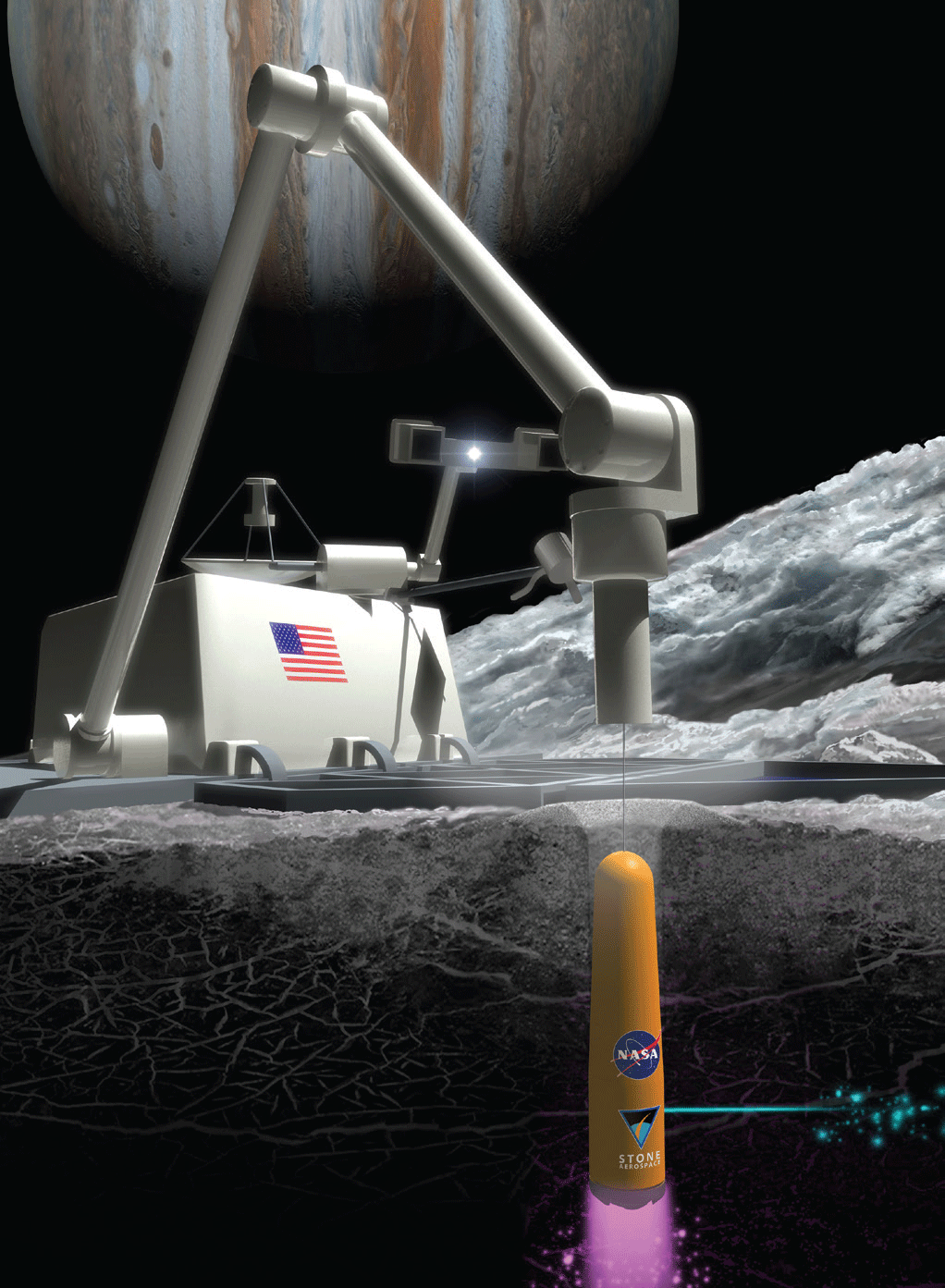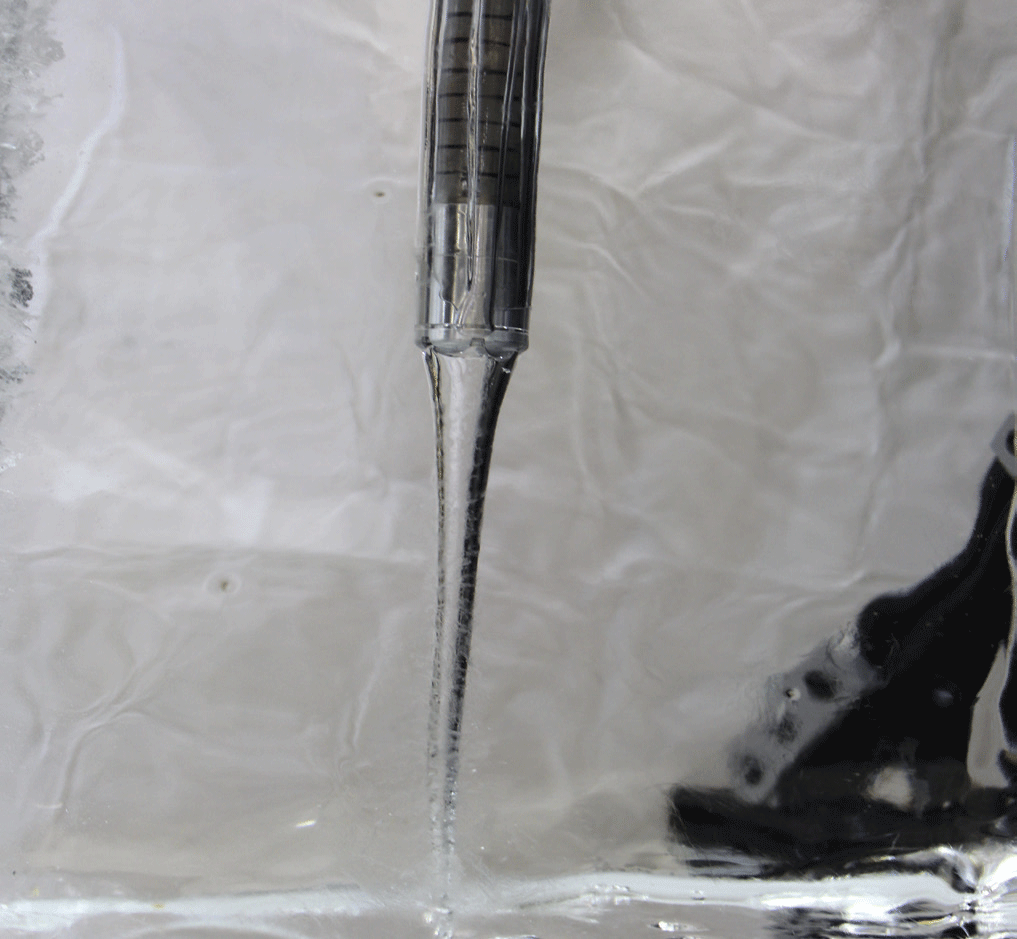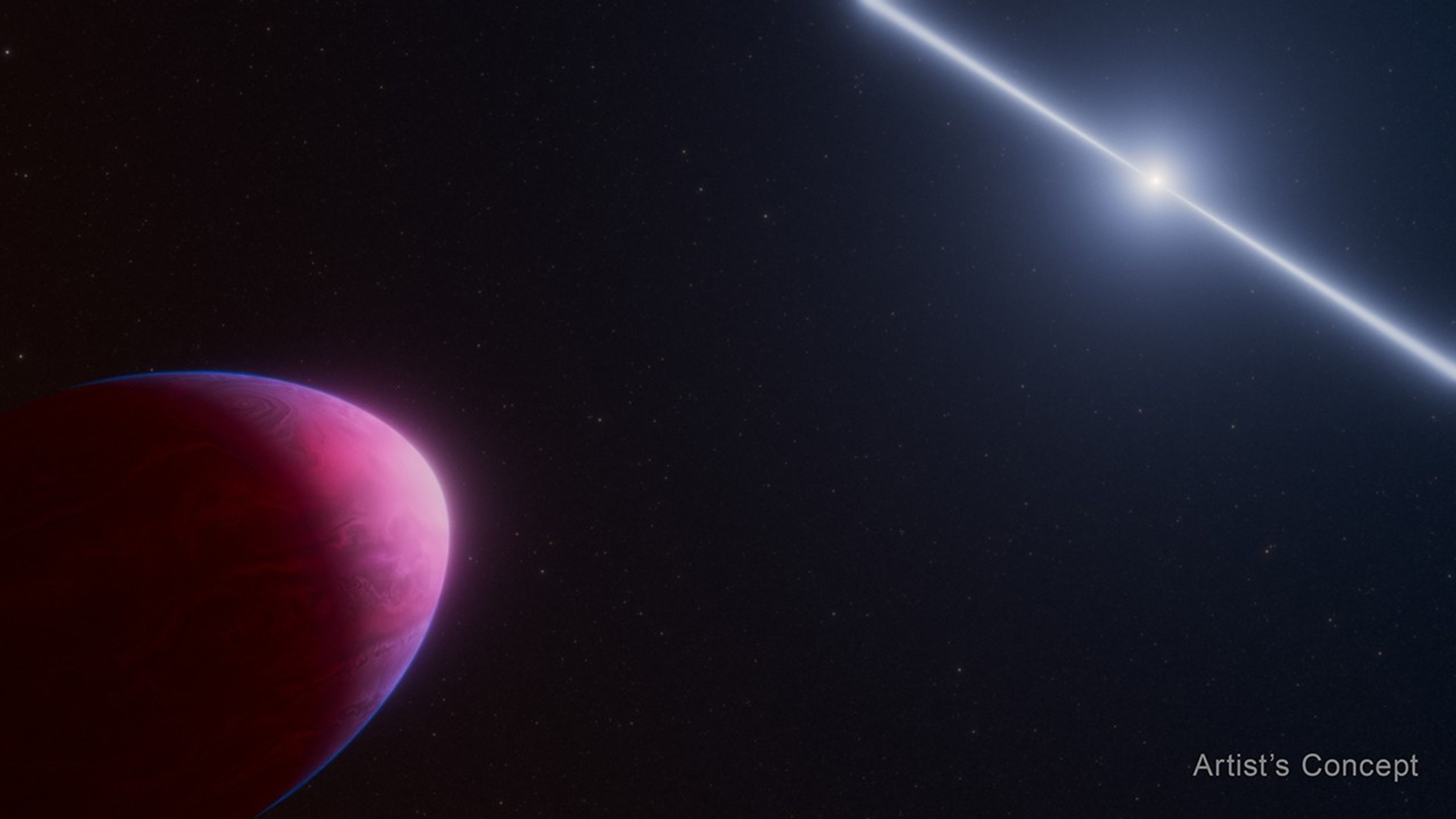Technology Development
Europa is one of 53 confirmed moons orbiting Jupiter. While slightly smaller than Earth’s moon, Europa primarily consists of silicate rock and is intriguing in that its crust consists of frozen water. Future missions under consideration to Europa would be enhanced by the ability to penetrate the multi-kilometer-thick ice crust and access the liquid water resident beneath.
To enable exploration of this fascinating celestial body, NASA SMD is funding the development and maturation of several promising ice-penetration technologies. One of these efforts is being executed just outside Austin, Texas by personnel at Stone Aerospace. Stone Aerospace is developing an entirely novel ice-penetrating technology called A Really Cool High Impact Method for Exploring Down into Europan Subsurface (ARCHIMEDES) that uses laser light carried by an optical fiber tether. ARCHIMEDES emits laser light from a nose cone and this direct laser probe allows for efficient penetration of hundreds of meters of ice. This new technology may provide future missions with access to the liquid water underneath Europa’s crust.
This unique approach to ice penetration is advantageous in that it can readily be integrated with a dedicated sensor fiber, which can also accommodate instruments capable of searching for biomarkers and characterizing the radiation/light environment. The combination of the laser penetrator and integrated fiber instruments could be a powerful new tool for a future Europa lander.
The overall technical objective of the two-year ARCHIMEDES technology development effort is to design and fabricate a prototype direct-laser penetrator. The technology development project commenced on 1 March 2017 and the PI has already made significant progress towards the development goals by completing several direct laser penetrator design studies. These design studies leveraged and benefitted from a number of high-fidelity laboratory experiments. The PI has also initiated trade studies and design activities for the aforementioned fiber system.
Impact
This ice-penetrating technology may enable future missions to access and analyze the liquid water under Europa’s crust, which will facilitate the search for life signatures within the liquid water.
Future Plans
After prototype fabrication is complete, the prototype’s performance will be assessed in harsh environmental conditions similar to those on Europa’s surface. The ARCHIMEDES PI will also explore several strategies for integrating the fiber-coupled optical sensing instruments as part of the development effort.
Sponsoring Organization
SMD’s Planetary Science Division is sponsoring ARCHIMEDES development through the COLDTech Program.



































